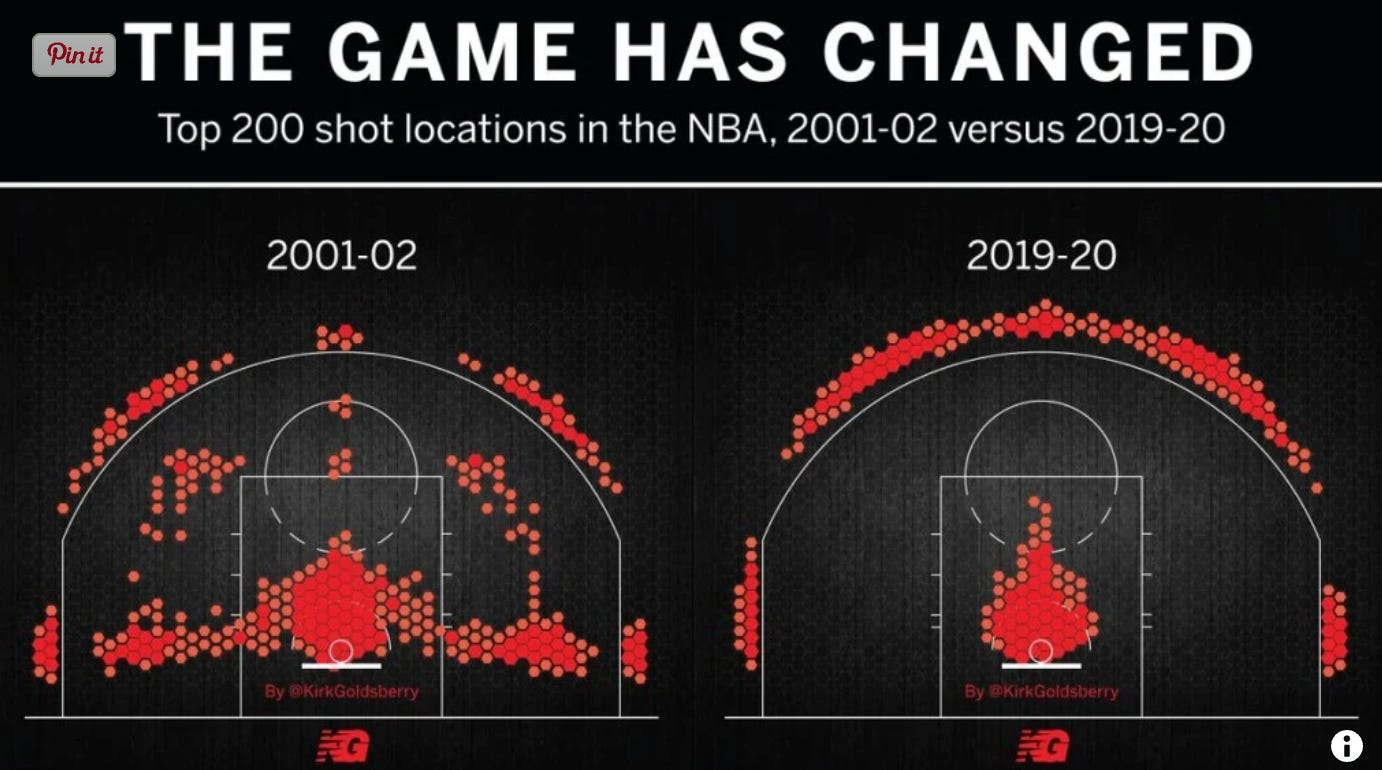The Passionless Game: Kierkegaard on Why Sports (and Life) Feel Flat
On the difference between a revolutionary and reflective age, and the need for greater daring
A common refrain has surfaced over the last couple of decades: sports just aren’t as fun to watch anymore.
Of course, people often think that things were better “back in the day,” and sports are not immune to being viewed through this nostalgic lens. Your dad will tell you basketball peaked in the 80s with Magic, the Lakers, and the Bad Boy Detroit Pistons. His dad probably said it peaked with Wilt the Stilt.
But even pro athletes and sports writers agree that something has changed across professional sports.
The drift to boringness started with baseball. Sabermetrics taught teams to identify inefficiencies in the game and exploit them. Instead of playing by feel, teams began to play by spreadsheets. Michael Lewis’s Moneyball showcased this analytical shift in the game. The numbers showed that bunting too often ended in an out, and stolen bases aren’t worth the risk. Batters began to be encouraged to either walk or swing for the fences. Pitchers go max effort for strikeouts — and relief pitchers have to be subbed in to keep up the intensity. The once-varied rhythms of the game — slap hits, daring steals, crafty bunts — have turned into a monotone of home runs and whiffs. Artistic defensive play has pretty much disappeared.
I saw this type of numbers-driven play at a Tulsa Drillers’ game a few seasons ago. It was one of the most boring games I’ve seen. Lots of strikeouts, and the only runs scored were from home runs.
Analytically-driven play started to creep into basketball in the mid-2000s, with Houston Rockets GM Daryl Morey leading the charge. Bruising post play, fast breaks, and mid-range jumpers were out; teams spreading the floor and launching threes were in.
This heatmap showcases how shooting changed in the NBA with the rise of statistics-driven play:
Gregg Popovich says the game has lost its “beauty.” Shaquille O’Neal calls it “f---ing terrible.”
American football hasn’t escaped the influence of analytics either, though the game has proved more resistant to being “solved.” Teams pass more, trick plays are rare, and coaches manage the clock with the precision of Frederick Winslow Taylor. But because of the structure of the game (the limited number of possessions, the 22 moving parts on each play, the role of field position), and the greater influence of luck (one tipped pass, injury, or fumble can swing an outcome), it’s harder to fully colonize it with math.
The thing is, these strategies work. You win games with a numbers-driven approach. That’s why teams use them.
But they’ve drained the soul from sports. There are fewer and fewer momentous moments. Games are technically sharper, but aesthetically flatter.
Whenever I find myself watching a strategically efficient, but predictably boring game — be it baseball, basketball, or football — I think of the weird, melancholy existential philosopher, Søren Kierkegaard.
Back in 1846, he wrote a short book called Two Ages. And while it wasn’t about sports, it explains exactly why our games — and our lives — can feel so dang flat today.
Keep reading with a 7-day free trial
Subscribe to DYING BREED to keep reading this post and get 7 days of free access to the full post archives.



